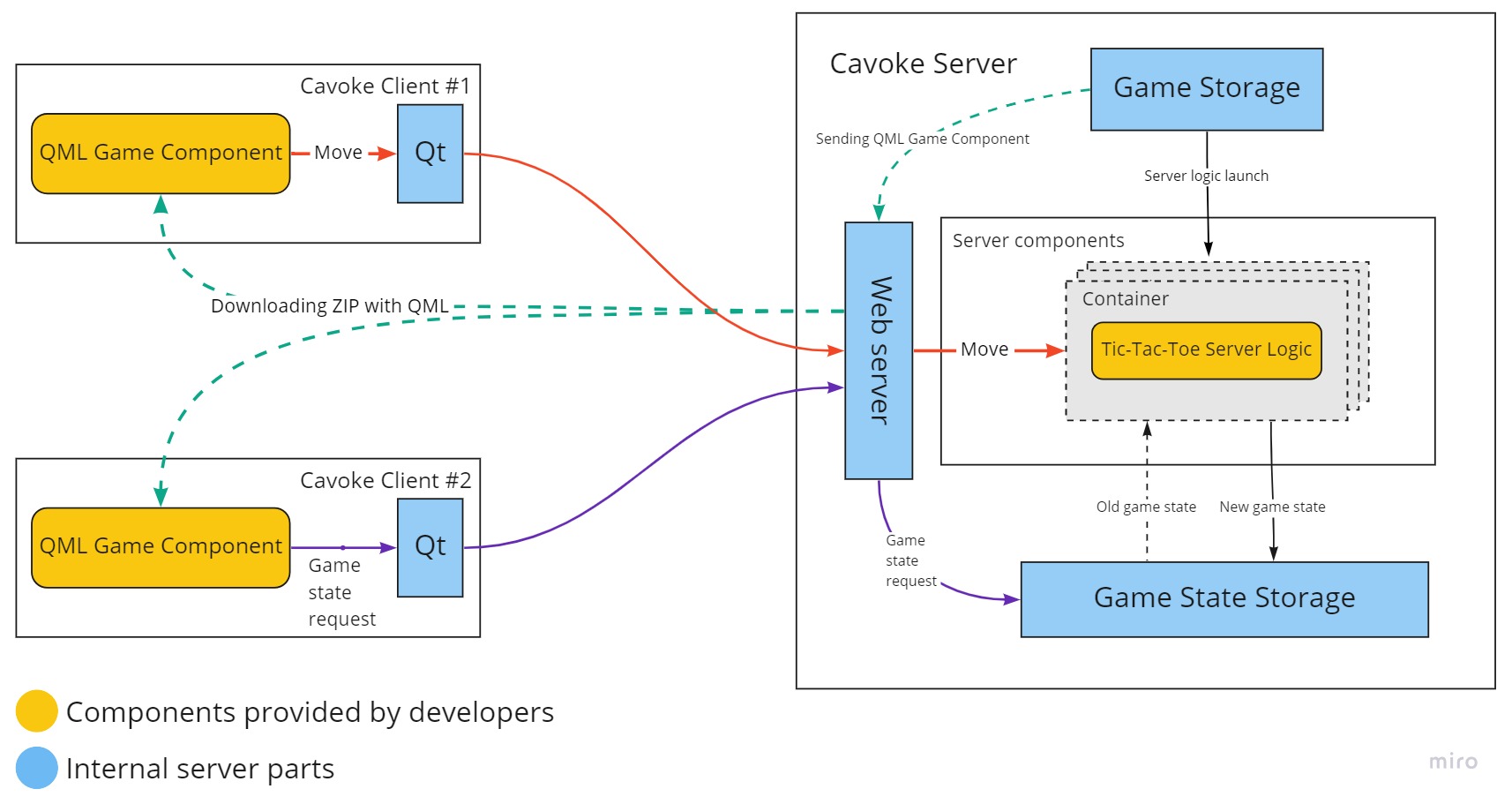 |
Cavoke
1.1.0
A Platform for creating and hosting multiplayer turn-based board games
|
 |
Cavoke
1.1.0
A Platform for creating and hosting multiplayer turn-based board games
|
The idea to achieve the described functionalities is simple. We split the game into two parts (components): the server-side and the client-side. Then we put our platform in between them and provide both components with simple yet powerful and comprehensible interfaces, and let the platform in between about all authentication, persistence and synchronization, etc.
Our design splits the game into these two components:
In this design two pieces of infrastructure that Cavoke provides are Cavoke Server and Cavoke Client. You can read more about them in the Deep Dive section.

In this diagram we can see how cavoke works.
First, clients automatically download client components onto their machines. They are unpacked, started and attached to the main cavoke client.
Second, when the game is started, a player can make a move (interact in some way with the qml interface), for which the client component can send a move to the server logic through its interface with the cavoke main client application. The main application adds necessary information to the request (game session id, authentication, etc.) and sends it to the main server. On the main server this information is checked, the corresponding game logic is accessed and a new game state is saved.
Finally, another client can check whether the game state has been updated. It receives this new game state, and signals the qml to update its interface using the information from the new state.